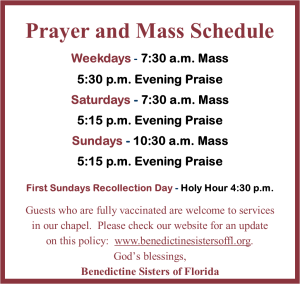 Trinity Sunday
Trinity Sunday
The Gospel just proclaimed comes near the end of Jesus’ discourse at the Last Supper and is an example of the implicit teaching on the Trinity. Jesus tells his disciples, and us, there is much more He could tell us, but we cannot bear it now. When the Spirit comes we will be guided to all truth – for the Spirit will take what is Jesus’ and declare it to us. Elsewhere Jesus has told us, “The Father and I are one.” If Jesus and the Father are one and the Spirit speaks what Jesus says, it follows that the three must be one.
In first reading God is revealed as wisdom. The words of the Responsorial Psalm remind us that human beings are the work of God’s fingers, little less than the angels and crowned with glory. In the 2nd reading, from the letter to the Romans, We are reminded that the love of God has been poured into our hearts. And, as you just heard in the gospel, the Spirit will make the revelation.
But, if one expects today’s readings to give a clear presentation of the doctrine of the Trinity – they will be sorely disappointed. In fact the word “Trinity” is not found in the Scripture. One writer has said if Jesus were to ask the question today, “Who do you say that I am?” A modern theologian might answer: “Thou art the Logos, existing in the Father as His rationality and then, by an act of His will, being generated, in consideration of the various functions by which God is related to his creation, but only on the fact that Scripture speaks of a Father, and a Son, and a Holy Spirit, each member of the Trinity being coequal with every other member, and each acting inseparably with and interpenetrating every other member, with only an economic subordination within God, but causing no division which would make the substance no longer simple.” Jesus might have replied: “What’s that you say?”
You have most likely heard this incident attributed to St Augustine of Hippo, who wanted so much to understand the doctrine of the Trinity and to be able to explain it logically. One day as he was walking along the sea shore and reflecting on this, he suddenly saw a little child all alone on the shore. The child made a hole in the sand, ran to the sea with a little cup, filled her cup, came and poured it into her hole in the sand. Back and forth she went to the sea, filled her cup and came and poured it into the hole. Augustine asked her, “Child, what are doing?” and she replied, “I am trying to empty the sea into this hole.” “How do you think,” Augustine asked her, “that you can empty this immense sea into this tiny hole and with this tiny cup?” To which she replied, “And you, how do you suppose that your small head you can comprehend the immensity of God?” With that the child disappeared.
Like Augustine we may not be able to understand the how of the Trinity but it seems very important to understand why God revealed this mystery to us. An overriding reason, it seems to me, is because we are made in the image of God. Therefore, the more we understand God the more we can understand ourselves. An important question for us today is: What does this doctrine of the Trinity tell us about the kind of God we worship and what kind of people we should be?
Remember the old saying “Two is company, three’s a crowd?” The Trinity shows us that three is community, three is love at its best; three is not a crowd. Love when it becomes complete is a trinity. We become fully human only when we are in relationship with God and in relationship with each other. When we receive forgiveness and a new determination to live a life more purposefully in the service of others, then we have an experience of God’s redemption. We have a more personal, more dynamic, experience of God – we come to more fully know the inner relationship of the Father, Son and Holy Spirit. Our understanding grows but it’s still a dynamic that is incomprehensible to the human mind. It is a mystery!
In days gone past, more so than today or so it seems to me, Trinitarian symbolism held a significant place in family life and here at the monastery. For example: parents signed the cross on their spouse’s and children’s foreheads as part of a goodnight or leaving the house ritual; at mealtime people would break a slice of bread into 3 pieces in honor of the Father, Son and Holy Spirit. A tiny piece was left on the plate in remembrance of the poor who had no bread to eat. Even today, three candles, three flowers or a bunch of three colors of flowers remind us of the Trinity. Of course, there is also the lesson of the Trinity seen in St. Patrick’s clover. In some cultures when a person blesses herself the ritual includes three smaller crosses. In preparation for the reading of the Gospel we sign ourselves on the forehead, lips and heart praying: “May the Word of God be in my mind, on my lips and in my heart.” Here at home, I recall one feast day when, in perfect silence, a large box of chocolates was being passed along the dining room table for each one of us to make her choice. Suddenly Mother de Chantal’s stern voice was heard: “Sisters, You don’t need to honor the 7 sorrows of Mary or Jesus’ last words on the Cross; three in honor of the Trinity will do just fine.”


Leave a Reply